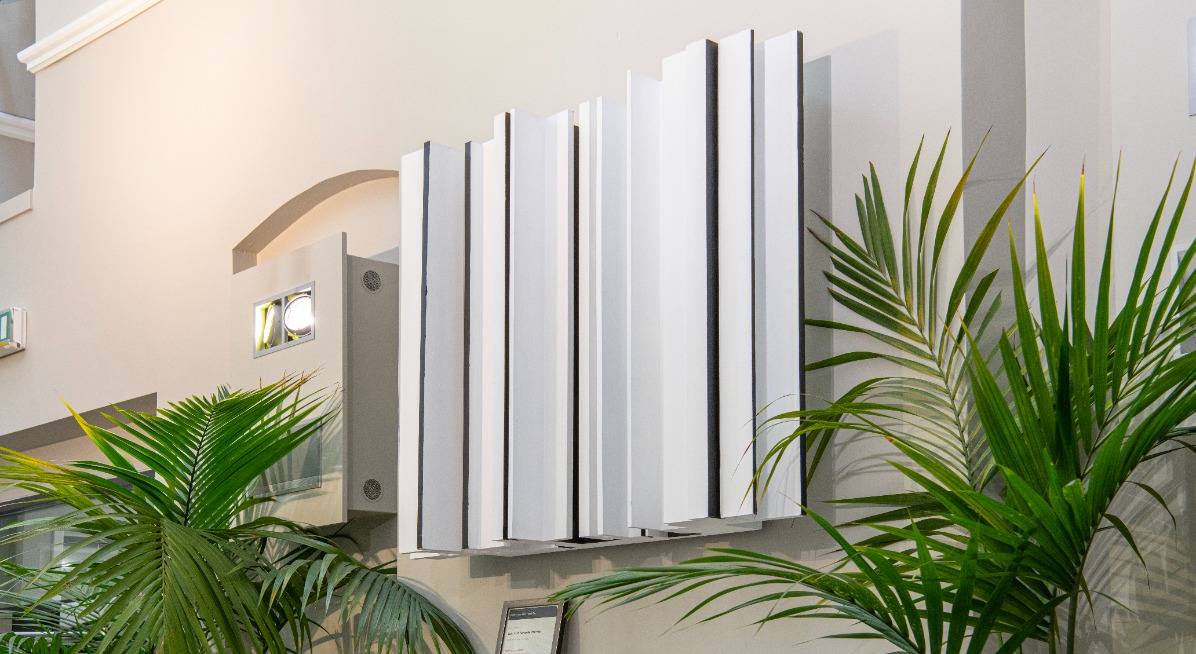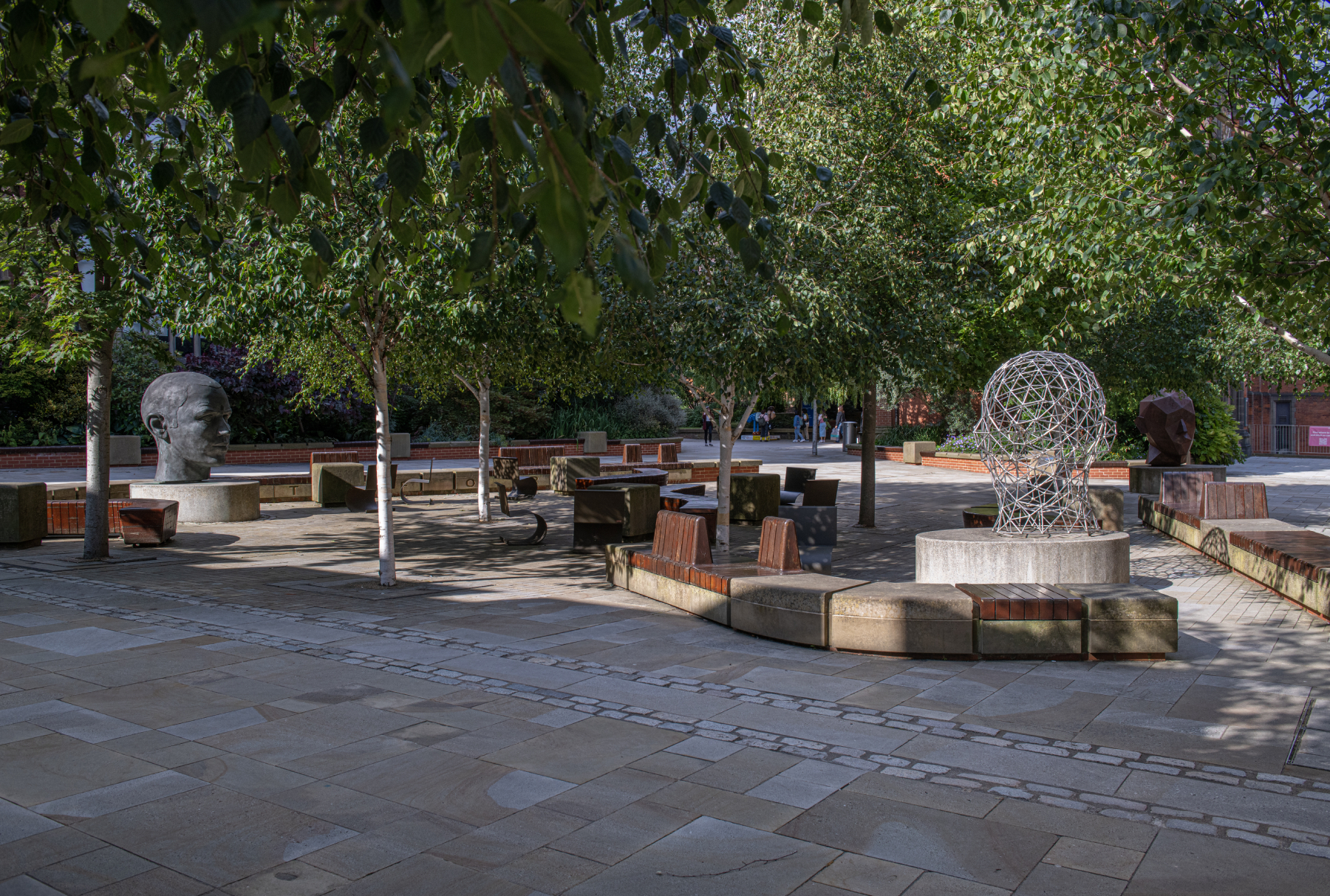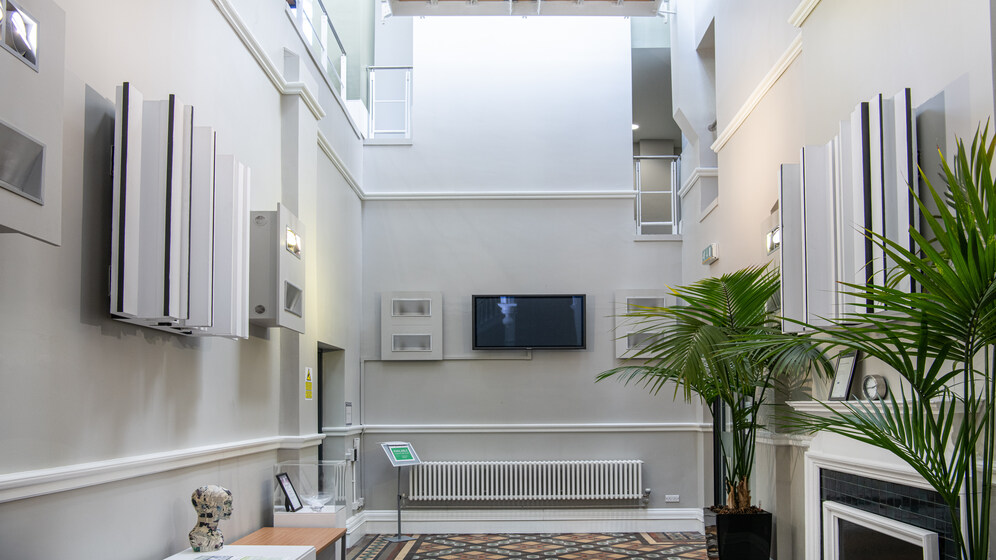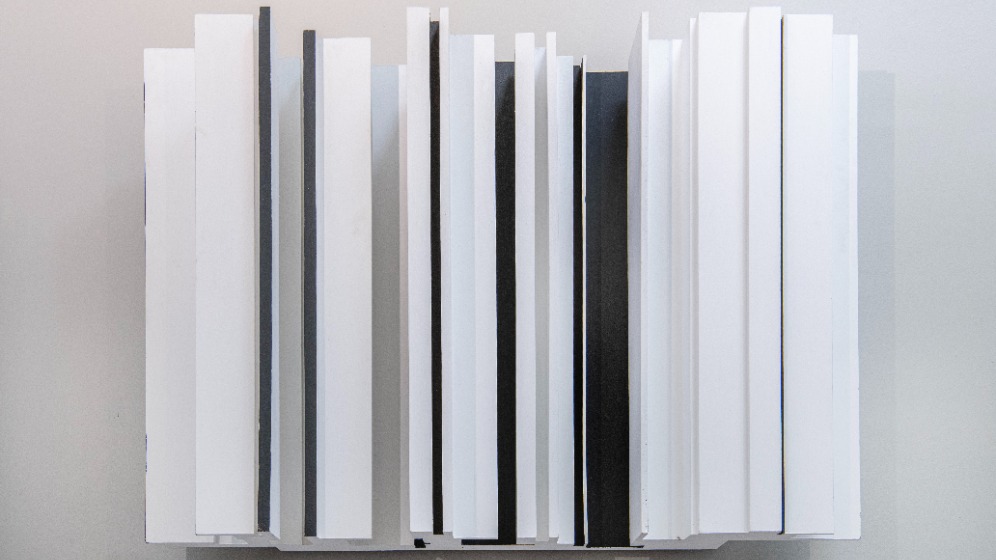Two Reliefs by Victor Pasmore
Find out more about the two reliefs found at Newcastle University and the pioneering abstract artist who created them.

The artwork
Originally commissioned for the Stephenson Building – home to the Engineering department – these two reliefs by Victor Pasmore (1908–1998) can now be found in the Culture Lab.
A pioneer in the development of abstract art in Britain during the 1940s and 1950s, Victor Pasmore became particularly well-known for his wall-mounted constructions. Many of these pieces were made using plywood, acrylic sheet and minimal amounts of colour.
Pasmore's work was very much influenced by the constructivist work and ideas emanating from Europe during the early 20th century.
Pasmore’s two reliefs are a perfect example of the variety of Newcastle art we have on display throughout our campus.
The artist
During the period from 1954 to 1961, Pasmore was the leader of the art course at King’s College, Durham – which is now the Fine Art department at Newcastle University. It was during this time that Pasmore was commissioned to produce the two abstract reliefs for the Stephenson Building, which houses the Engineering department.
Pasmore’s approach to teaching art at Newcastle became very much influenced by constructivism and other early 20th century understandings of art – in particular the radical philosophy of the Bauhaus.
Working with Richard Hamilton – who was also teaching in Newcastle’s art department at that time – Pasmore developed the course known as Basic Design. Newcastle’s art school became a key player in the radical developments in art education in the 1950s and 1960s, and the subsequent revolution across all art education in the UK.
During the year of 1955, Pasmore also became a consultant architectural designer for a project looking to develop Peterlee New Town in County Durham. This position allowed him to design constructivist artwork at such a scale that people could actually walk through it!
Pasmore also worked on a This is Tomorrow exhibit at the Whitechapel Art Gallery during 1956, in collaboration with sculptor Helen Phillips and designer and architect Ernö Goldfinger. Further collaboration with Richard Hamilton and art critic Lawrence Alloway led to the groundbreaking ‘an Exhibit’, which was shown at the Institute of Contemporary Art (ICA) in London and in Newcastle’s Hatton Gallery in 1957.
Amongst many other projects, Pasmore was also commissioned to make murals for the Rates Hall at the then-recently-built Newcastle Civic Centre. These pieces can still be seen today.
Although largely self-taught as an artist, Pasmore attended evening classes at the Central School of Arts and Crafts in London from 1927 to 1931. During the latter part of this period, he began to showcase his art with the London Group. He also joined the London Artists’ Association in 1932.
Pasmore undertook a variety of teaching posts over the next few years and was eventually appointed Master of Painting in the School of Fine Art at King’s College, University of Durham. He held this post until 1961.
During his career, many viewed Pasmore’s art as having undergone a ‘road to Damascus’ conversion – he had ‘gone abstract’.

.jpg)

